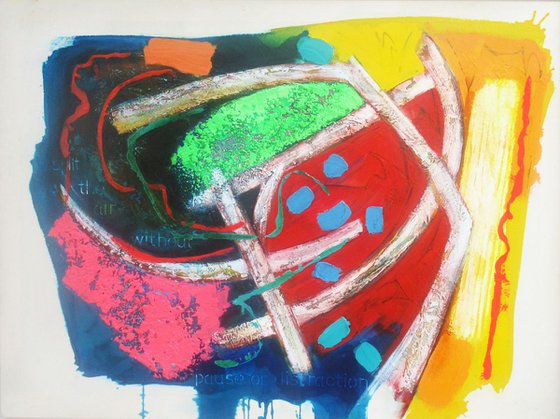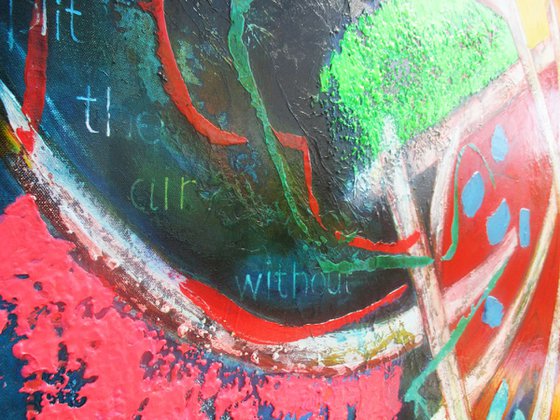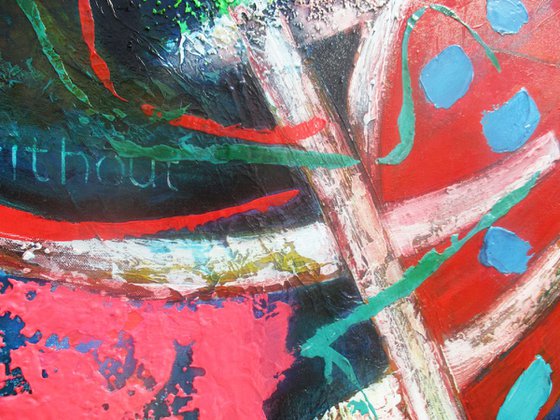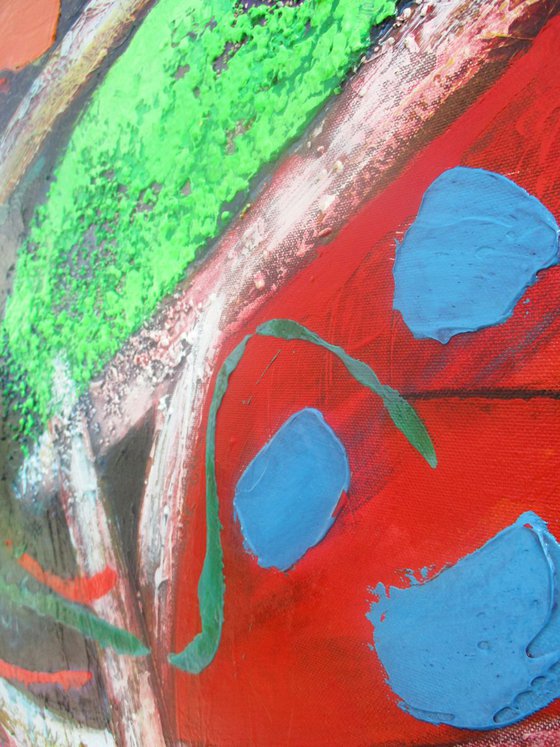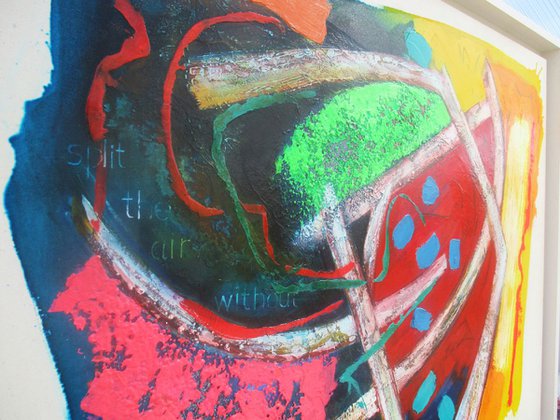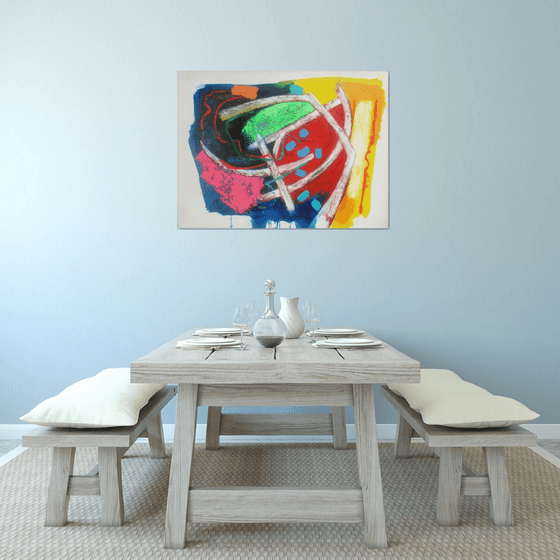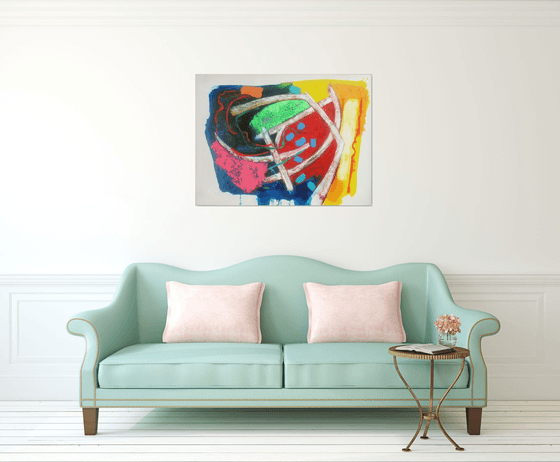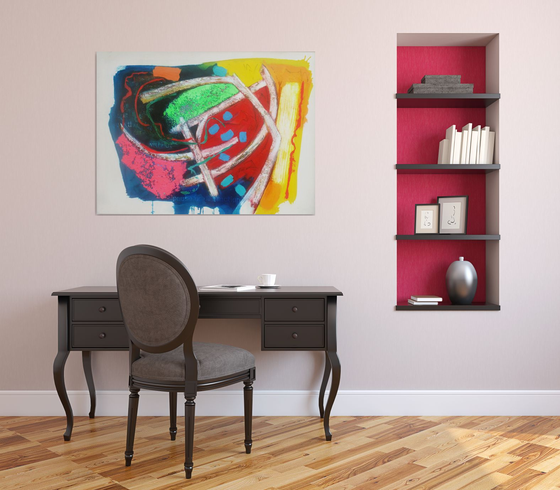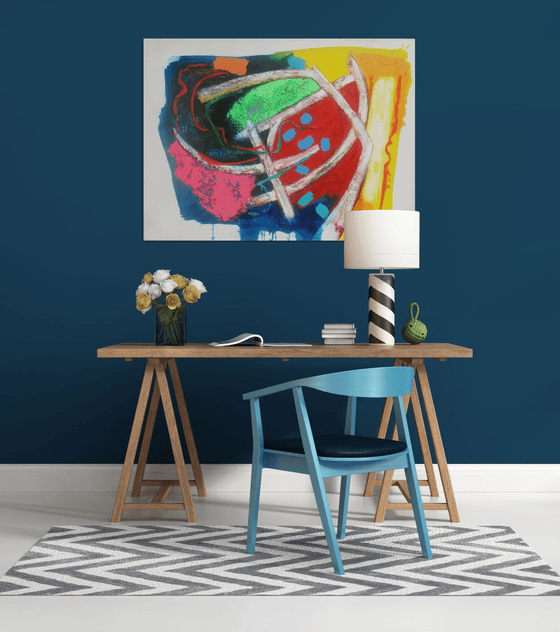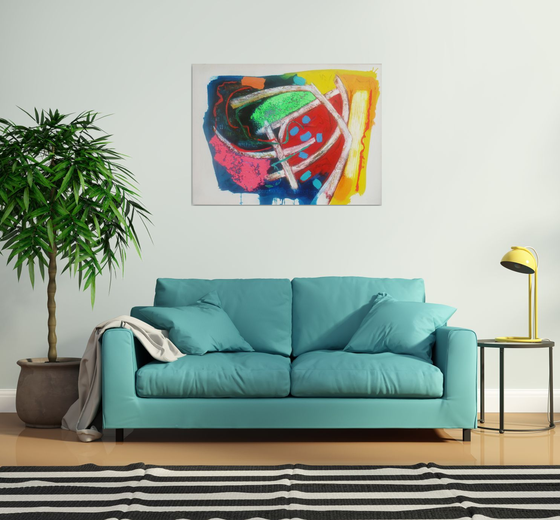- By medium
- By subject
- By budget
- Sales
- Gift cards
- Discover all art
- Artists
- Editors’ picks
- Ideas
Original artwork description:
‘Love and Strange Horses’ is an acrylic painting 114x85cms on canvas. This painting was inspired by the sight of a racing horse on the open beach at Birkdale close by to where I live. On my daily early morning walks at 6.00am with our two greyhounds there is usually no one around. It is a peaceful time. On some occasions I see race horses galloping along the beach close to the water’s edge. A horse running at high speed is indeed an impressive sight. Horses have appeared in works of art throughout history, frequently as depictions of the horse in battle. The horse appears less frequently in contemporary art partly because the horse is no longer significant as a mode of transportation. Most modern representations are of famous contemporary horses, artwork associated with horse racing, or artwork associated with the historic cowboy or Native American tradition of the American west. The horse appeared in prehistoric cave paintings such as those in the Lascaux caves, estimated to be 16,000 years old. Prehistoric hill figures have been carved in the shape of the horse, specifically the Uffington White Horse, an example of the tradition of horse carvings upon hill-sides, which having existed for thousands of years and continue into the current age. Reference to ancient signs, motifs and symbols frequently feature in my work and ‘The White Horse’ has been referenced on other occasions in earlier works such a ‘Cavallo’. This painting returns to such early reference points. It tries to capture the grace and posture of equine movement and pays homage to the horse as a symbol of freedom. Whilst making the painting I also made reference to expressionist painter Franz Marc. I am continually inspired by modern and contemporary artists who demonstrate such a love for colour and light. The Impressionists, the Expressionists, John Hoyland, Barbara Rae , the Fauvists and the COBRA group continue to be so important to me. I work on custom made frame stretched 8oz unprimed cotton canvas. The unprimed canvas allows dichlorotriazine dyes to saturate and bleed into the working area. I work over the dyed canvas using brushes, knives, cloths and squeegees to manage layers of acrylic paint. It is a continuous process of ‘correction’. At different stages I add crushed sea shells to the paint to create heavier surfaces. The paintings are built in layers over a period of time. The boundaries of what can be managed in a painting present a constant challenge to me and through a process of layering, cancellation and improvisation my intention is always to test such boundaries.
Materials used:
Acrylic paint and dyes
Love and Strange Horses (2016) Acrylic painting
by Frank Barnes
5 Artist Reviews
£900
- Acrylic painting on Canvas
- One of a kind artwork
- Size: 114 x 85 x 1.75cm (unframed) / 114 x 85cm (actual image size)
- Ready to hang
- Signed on the back
- Style: Abstract
- Subject: Abstract and non-figurative
Loading
Original artwork description
‘Love and Strange Horses’ is an acrylic painting 114x85cms on canvas. This painting was inspired by the sight of a racing horse on the open beach at Birkdale close by to where I live. On my daily early morning walks at 6.00am with our two greyhounds there is usually no one around. It is a peaceful time. On some occasions I see race horses galloping along the beach close to the water’s edge. A horse running at high speed is indeed an impressive sight. Horses have appeared in works of art throughout history, frequently as depictions of the horse in battle. The horse appears less frequently in contemporary art partly because the horse is no longer significant as a mode of transportation. Most modern representations are of famous contemporary horses, artwork associated with horse racing, or artwork associated with the historic cowboy or Native American tradition of the American west. The horse appeared in prehistoric cave paintings such as those in the Lascaux caves, estimated to be 16,000 years old. Prehistoric hill figures have been carved in the shape of the horse, specifically the Uffington White Horse, an example of the tradition of horse carvings upon hill-sides, which having existed for thousands of years and continue into the current age. Reference to ancient signs, motifs and symbols frequently feature in my work and ‘The White Horse’ has been referenced on other occasions in earlier works such a ‘Cavallo’. This painting returns to such early reference points. It tries to capture the grace and posture of equine movement and pays homage to the horse as a symbol of freedom. Whilst making the painting I also made reference to expressionist painter Franz Marc. I am continually inspired by modern and contemporary artists who demonstrate such a love for colour and light. The Impressionists, the Expressionists, John Hoyland, Barbara Rae , the Fauvists and the COBRA group continue to be so important to me. I work on custom made frame stretched 8oz unprimed cotton canvas. The unprimed canvas allows dichlorotriazine dyes to saturate and bleed into the working area. I work over the dyed canvas using brushes, knives, cloths and squeegees to manage layers of acrylic paint. It is a continuous process of ‘correction’. At different stages I add crushed sea shells to the paint to create heavier surfaces. The paintings are built in layers over a period of time. The boundaries of what can be managed in a painting present a constant challenge to me and through a process of layering, cancellation and improvisation my intention is always to test such boundaries.
Materials used:
Acrylic paint and dyes
14 day money back guaranteeLearn more
